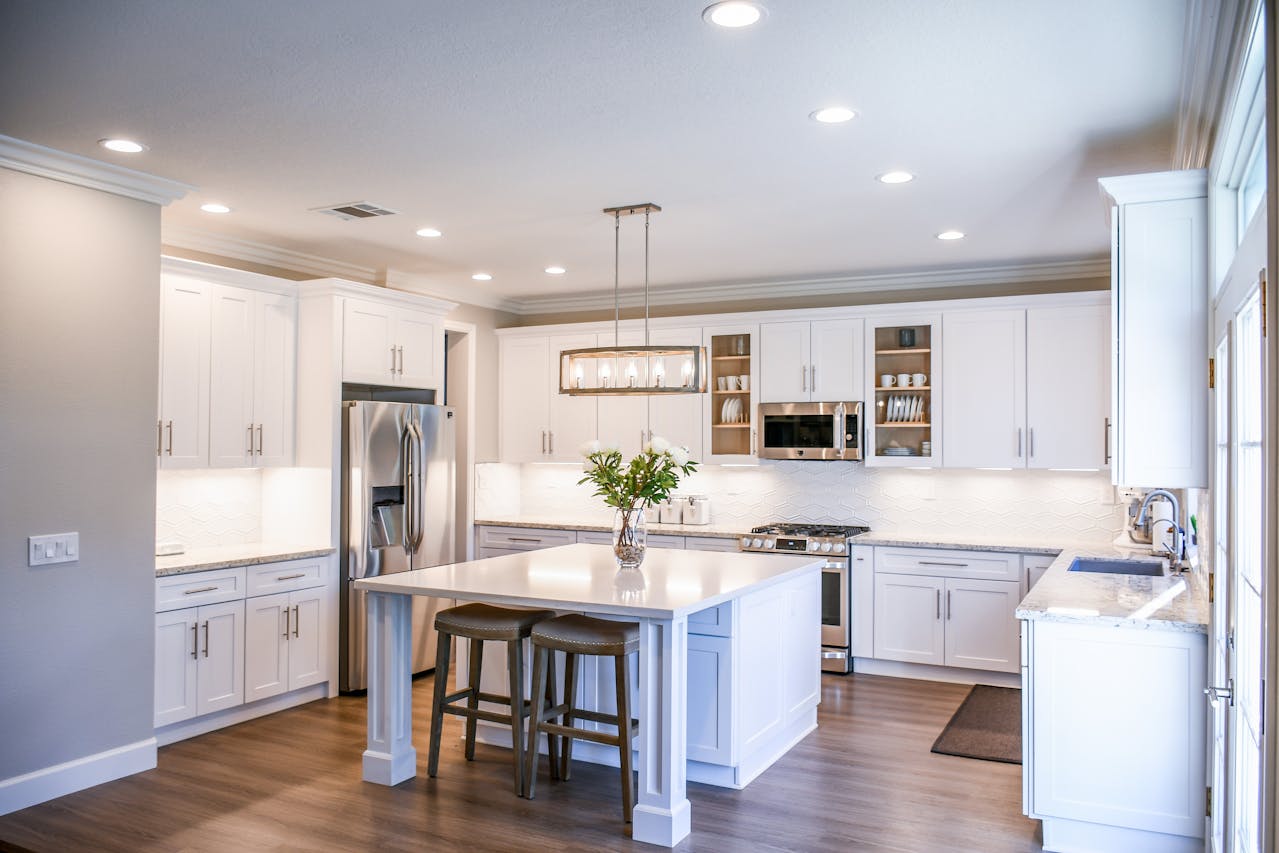“Good luck is when opportunity meets preparation, while bad luck is when lack of preparation meets reality.”
The popular notion of leadership is to take decisive actions that others follow. More attention ought to be paid to the influences that precede action. When sales designers put the homeowner first, they subtly demonstrate leadership by offering the pilot’s chair to prospects
and taking the navigator’s seat.
Remodeling a kitchen or bath is a once or twice-in-a-lifetime experience for most people. As a kitchen is the most relied-upon room in a home, it is incumbent upon sales designers to deliver a wonderful experience for the homeowner that leaves a positive impact that lasts a lifetime.
This article discusses four empathetic decisions sales designers can make to create remarkable experiences for homeowners and strengthen their relationships with them. By thinking from prospects’ perspectives, these decisions can improve a firm’s profitability and build client loyalty.
1. Demonstrate an empathetic attitude
Fast, accurate service has an inferior effect on customers if the salesperson has an impersonal attitude.
Shine the spotlight on the customer: It’s the prospect’s and client’s show.
Empathetic leadership takes the golden rule a step further by the sales designer putting themselves in the prospects’ shoes to see the potential investment through their eyes. As the prospective hire for a kitchen remodeling project in its embryonic stage, sales designers want to learn what the investor truly wants from their shopping experience. Prospects may find it difficult to make decisions when they discover that what they want costs more than they’re willing to pay.
What is on the homeowner’s mind when they learn they can expect eight months of turmoil as their kitchen is remodeled? Or that the designs and products that interest them cost between $95,000 and $115,000 after expecting to max out at $80,000?
Empathetic leadership demonstrates that the prospect’s and the client’s every interest and concern is how we are in business. Designing someone’s kitchen is not the beginning of a transaction – but the beginning of a conversation to discover how the prospect wants to make their investment and the achievable ways they will solve it with you to make their vision a reality.
Empathetic leadership builds on the promise of treating clients like they are the only ones you have. During the project, the client is the conductor for several months while you and your team build what the client wants to see in their home.
2. Create an atmosphere of transparency
As sales designers, it is our job to lead by being vulnerable. We have to pivot to customers’ wants and needs. Being vulnerable is a method to demonstrate outstanding service merely by being present.
Customers and sales designers exit a consultation with expectations.
Uncommunicated expectations will always lead to unmet expectations.
To avoid that unpleasant, potentially disastrous situation that begins with the homeowner saying,
“I thought…
- …my kitchen would be finished March 25, and now you’re saying April.”
- …that this service was included in the price you quoted me.”
Situations that need to be solved can arise anytime during a kitchen remodel.
Sales designers who engage homeowners in transparent communication make the homeowner feel comfortable. Transparent, upfront project budgeting is a method to ease the homeowner’s natural inclination toward anxiety by sharing all of the details with them. After all, it’s their home that’s being torn up. It’s their lives that are interrupted by the most used room of their home in disarray for months.
Excellent communication starts with upfront trust and reinforces that trust by proving the tangibility of the development process along the way. Continuously practiced, transparency can tangibilize the selling, designing, ordering, and installation processes.
Each party has a responsibility
The sales designer’s responsibility – is to educate the client on the cost, action, and time involved in the process.
When a sales designer clearly outlines what the process looks like at each touchstone, the client is empowered by an understanding of the remodeling process at its onset.
This creates a vision of the new kitchen for the homeowner and illuminates how they will get to that day when the remodeling job is complete.
The client’s responsibility – is to be clear about what they want, and to make their decisions and sign documents according to their deadline.
Develop transparent accord
- Practice transparent budgeting during the consultation and give the prospect three quotes
- Be transparent about the remodeling journey of new construction at the onset of the job
- Be forthright to avoid allowing unmet expectations to arise
Create an atmosphere of transparency where you and the homeowner work towards a mutual goal – tangibilize the process along the way – and you will diffuse the natural tendency of clients to be anxious about making changes to their home.
3. Create an atmosphere of leadership
Build your showroom to naturally speak to and exemplify your firm’s process by creating an atmosphere that shows prospects what it looks like to remodel with your firm from beginning to end.
Cabinet comparison walls
Good-Better-Best (GBB) selling does more than break down the quality of your cabinet lines. Since cabinetry accounts for roughly 60% of a kitchen remodeling investment and can be confusing to clientele, cabinetry comparison walls illustrate three price points and help demystify the reasons for the cost differentiation.
- Cabinet A … Price point A
- Cabinet B … Price point B
- Cabinet C … Price point C
Storyboard walls
Have a storyboard that educates consumers on the firm’s project development process by giving case studies of interactive project budgeting, client retainer agreements, home consultations, preliminary plans, product selection, final plans, project agreement, product delivery, installation, the final punch list, and client evaluation. Completed forms and photos animate the designer’s explanation of a company’s unique process.
Transparent selling exercises
Transparent selling exercises help sales designers develop their relatability with different types of clients.
Showrooms that create an atmosphere of educational leadership relieve the confusion and stress prospects often feel when learning about the time, cost, and decision-making involved in remodeling a room in their home.
An atmosphere of educational leadership also lessens the stress sales designers may feel in exercising their selling abilities to sell or extol the merits of their firm.
Educational leadership is a stress deflator for both parties.
4. The mindset of a star seller
Excellent sales designers have skills and traits that can be leveraged to shine the spotlight on others. Make prospects feel good about coming into the showroom and feel even better when they leave a consultation, knowing whether they want to work with your firm and why they want to work with you.
- Be an outgoing personality
- Be an illuminator
- Be a confidence builder
- Be opportunistic
- Demostrate opptimistism
- Show enthusiasm
- Engage others with active listening
In any sales situation, active listening is the best asset to the conversation. The most valuable information a person hears is the answer to their question. Knowing what your prospects and clients want will sharpen your relationship with them and pave the way for the relationship to pay off.
—Brandon Fitzmorris, VP of Membership & Sales, SEN Design Group
Contact us to reach your revenue goals.
Learn how to master strategic planning, sell more products into every job, leverage industry-specific tech developments, Good-Better-Best selling, and other smart kitchen and bath design implementations at one of SEN University’s esteemed in-person schools and online business courses.




